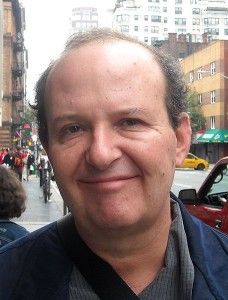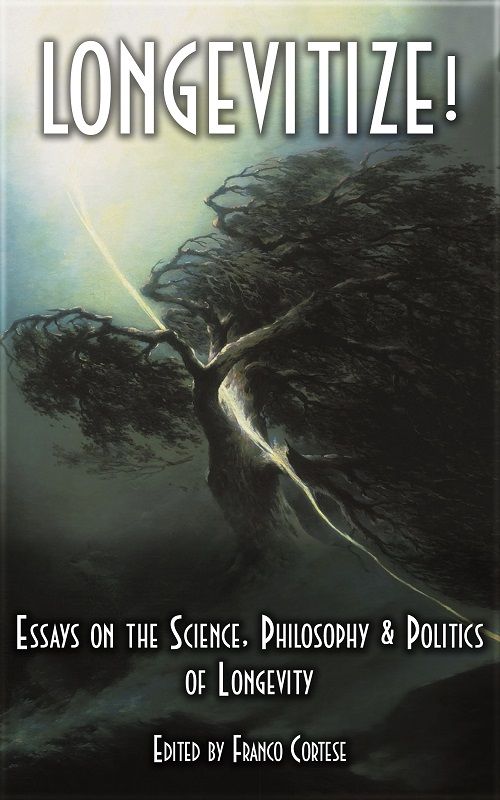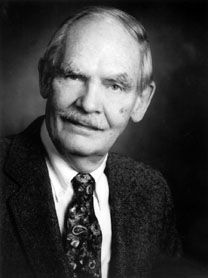Neo-Democracy: The Evolution of the Democratic Republic
Dustin Ashley
Abstract
This essay presents a new political paradigm based upon concepts that originate from direct democracy, meritocracy, technocracy, and egalitarian ideology. I systematically redesign the common political system to where these concepts can complement each other and work as a synergistic whole. The main idea is to recreate the direct democratic system made famous by the ancient Athenians while repurposing it for use in this current era in human history and for many generations to come.
1. Introduction
Karl Marx wrote that, “The history of all hitherto existing society is the history of class struggles.”(Marx and Engels 1848) This is true in the case of many rising world powers where the rich often take advantage of the working class. For example, the American Gilded Age sets the example for what happens when laissez-faire liberalism becomes rampant. During this era, politicians set up “political machines” to keep them and whoever they’re aligned with in office for as long as they wish. This occurred while companies began to take control of single markets and created monopolies where they were able to do whatever they pleased. One major proponent of this version of free-market economy was William Graham Sumner, whose book What Social Classes Owe to Each Other (1884) agreed with laissez-faire while being against granting assistance to the poor. This type of philosophy was one major reason for the rise of plutocracy and corporatocracy that still resonates through America to this day.
To keep this from happening again, emerging nations must learn from these past follies and make sure that they aren’t repeated. In order to prevent such a system from occurring, a form of government must be set up where every person has equal opportunity to a nation’s resources while being rendered unable to usurp someone’s ability to obtain similar resources. This includes enacting a government that is based on putting people in specific offices that only deserve it by proving themselves worthy via an administered exam while solving national issues with problem solving strategies a la the scientific method. With a 21st century mindset and the aid of our finest technology, we can create a more efficient and practical form of government than before.
2. Basic Political Structure
This new political paradigm is a technologically aided form of direct democracy that consists of elements from technocracy, meritocracy, and egalitarian ideology. Its main ideology comes from Athenian democracy, where they did not vote on representatives but rather voted on their behalf. Even though they didn’t grant suffrage to women, slaves, children, and immigrants, they had no set reference regarding class and often participated in large groups. These aspects can be applied to this paradigm; in which there are no representatives and that anybody of any class can participate.
In addition, the use of technology can be used to supplement the political process and improve government to its highest state of efficiency. This includes using the Internet and enabling citizens to become more active in making decisions for their government. Such claims can be made evident by Ann Macintoch, who coined the term “E-Democracy” for the use of technology as a supplement to democracy. She states that, “E-democracy is concerned with the use of information and communication technologies to engage citizens, support the democratic decision- making processes and strengthen representative democracy.” (Macintoch 2006) Not only does this allow for a more active participation in political affairs, this can also lead to more efficient solutions to troubling problems. When technology is spliced with democracy, it is possible that democracy can evolve as technology does.
It is important that every citizen is given equal opportunity to pursue their interests without the lingering fear that something will inhibit them from achieving their goals. It is in egalitarian thought that every person deserves an equal chance, regardless of their form, ethnic background, nor intellect. This is true in both the works of Karl Marx and John Locke. John Locke states that all people were created equal and that everyone had a natural right to defend his “Life, health, Liberty, or Possessions.” (Locke 1690) On the other hand, Karl Marx believed that there should be an equal distribution of a nation’s wealth to every citizen. Even though their philosophies differ, they both had a view on egalitarianism that is still relevant today. When the wealth can be distributed equally to everyone while everybody has their ability to defend their basic human rights, there lays the key to an egalitarian society.
With the synergistic combination of egalitarianism and technological democracy, you will find technocracy. This peculiar form of government relies on a nation’s leaders to be scientists, engineers, and others with compatible skills and not politicians and businessmen. (Berndt 1982) These technocrats use the scientific method when approaching social problems rather than political or philosophical implementation. These people are voted in by who is most qualified and not by who has the most money or most connected. This form of government is partially implemented in the Communist Party of China since most of their leaders are engineers. The Five-year plans of the People’s Republic of China have enabled them to plan ahead in a technocratic fashion to build projects such as the National Trunk Highway System, the China high-speed rail system, and the Three Gorges Dam. (Andrews 1995) In implementing technocracy into a nation’s government, it is possible for the nation to become prolific and prosperous.
3. The Voting Masses
The voting masses represent every individual that is eligible to vote, for as long as they are a free person and of age to make a responsible choice. Whereas age is a subjective requirement and is open to discussion, a free individual is one that is not incarcerated. The voting masses do not have any political nor governmental responsibilities and may vote if they choose to do so. There are no requirements and they possess the majority of the political power. This is evident in their ability to influence their nation by approving or denying any laws that are presented to them. In summation, every individual has the choice to be involved in their nation’s government as much or as little as they want.
4. EDD
All new sovereigns and bills must be approved by the voting masses before such actions are enacted. This is made possible through a form of direct democracy called electronic direct democracy, or EDD. This allows for the common people to be involved in the legislative process and nullifies the necessity for a legislative branch in government. The Florida Institute of Technology is currently researching and developing the technology that supports EDD, while implementing it in their student organizations. (Kattamuri et al 2005) If proven successful, this further dissolves the need for a representative democracy while giving more power to the common people.
5. Sovereigns of the State
The Sovereigns of the State are a group of individuals who coordinate the different aspects of a nation while addressing the needs of the people. While there are numerous roles that a sovereign must fulfill, this problem can be solved by having multiple sovereigns that work together ad hoc. Each sovereign will have a different duty to fulfill and must do so in an effective and productive manner for the sake of the nation. This includes:
- Sovereign of the Military:
The Sovereign of the Military, or High General, is responsible for commanding the nation’s military during times of war. The individual has the capability to address the nation and declare war but it must be approved by the voting masses for the declaration to be enacted. The High General regulates the military and makes sure that the nation is prepared for when an attack is immanent. In order to become the Sovereign of the Military, one must be an experienced soldier of high rank that understands battlefield tactics and can lead the nation during times of war.
- Sovereign of the Consensus:
The Sovereign of the Consensus, or Head Chairman, plays a dormant role as a peacekeeper during times when new sovereigns are voted in. The Head Chairman also serves as a tiebreaker for when a stalemate occurs during the voting process.
- Sovereign of Energy:
The Sovereign of Energy focuses on energy production and distribution while overseeing the development of more efficient energy sources.
- Sovereign of Treasury:
The Sovereign of Treasury, or National Economist, focuses on financial or monetary matters and is in charge of manufacturing currency. The National Economist is responsible for formulating economic and tax policies and managing public debt. The National Economist must hold a high degree in economics and has experience in financial matters.
- Sovereign of Education:
The Sovereign of Education, or National Educator, is responsible for education policies in public schools and institution accreditation. The National Educator must have a degree in education with experience in teaching at both public schools and universities.
- Sovereign of Foreign Affairs:
The Sovereign of Foreign Affairs, or Chief Diplomat, is responsible for maintaining stable relations with other nations and other diplomatic duties. The Chief Diplomat is also responsible for issues pertaining to foreign policy. In order to become eligible for this position, one must have experience with matters dealing with diplomacy and foreign affairs.
- Sovereign of Labour:
The Sovereign of Labour enforces laws involving unions, the workplace, and any business-person interactions. This also includes maintaining minimal unemployment within the nation.
- Sovereign of National Affairs:
The Sovereign of National Affairs is responsible for issues pertaining to land management, landmark preservation, natural disaster response, immigration policies, and law enforcement policies.
- Sovereign of Human Services:
The Sovereign of Human Services, or Head Physician, is responsible for issues concerning disease control, advancement in medical technologies, final approval of pharmaceutical drugs and medicines, food safety and management, nutrition, and welfare. To be eligible for this position, the aspirant must have a medical degree and experience in the medical field.
- Judicial Sovereign:
The Judicial Sovereign is responsible for reviewing all bills before they are enacted as laws. This includes making sure they do not go against the principles written down in the nation’s primary social contract i.e. the constitution. The Judicial Sovereign also serves as Head Judge during trials that are considered high crimes, such as murder and fraud. To be eligible for this position, the applicant must be already a licensed attorney and/or judge with experience in legal matters.
These sovereigns can only be placed into office by merit alone and not placement within the community. This is done by giving them time to place distribute a list of their accomplishments and their criminal record. During this time period, the voting masses can decide who they believe is fit for the job. These actions are to ensure that the voting masses are voting into office those whom they think are fit for the positions and not by “popular vote”. To further ensure that the applicants are not committing acts of fraud, their paperwork is first reviewed by a group of volunteers that can verify the authenticity of the applicants and their paperwork. The identity of the volunteers is kept anonymous to ensure that they cannot be bribed or intimidated by the applicants. The volunteers form a discipline-specific administration system and are not under the influence of any focus group. In order to be selected, they must show that they are experts in their selected field and are not already under any influence.
6. Judicial System Within The Political System
In a governmental sense, the judicial system is used to declare whether a bill is protected by the nation’s social contract or if it goes against. Typically, if a bill goes against the social contract then it will be vetoed and terminated. The judicial branch serves as a “political buffer” between the legislative and executive branches. This gives the leaders within the judicial branch much power. In the case for this framework, the judicial branch works as a mediator between the voting masses and the sovereigns. To keep matters fair, the members of the judicial branch are to be impartial and fair towards both sides.
7. Conclusion
This new political paradigm serves only as a framework for any political system and not as a system in itself. It can be modified, expanded, or condensed as needed as long as the main idea is not lost. This may serve as the next step in constructing a new political system based on progressive thought and pro-technology ideology. Whether it serves as a theoretical concept or someone applies these ideas to their organization, this concept is meant for anyone to read.
Works Cited
- Marx, K., and Engels, F. 1848. The Communist Manifesto
- Sumner, W.G. 1884. What Social Classes Owe to Each Other
- Machintoch, A. 2006. Characterizing E-Participation in Policy-Making
- Locke, J. 1690. Second Treatise of Government
- Berndt, E.R. 1982. From Technocracy to Net Analysis: Engineers, Economists, And Recurring Energy Theories of Value. Studies in Energy and the American Economy, Discussion Paper No. 11
- Andrews, J. 1995. Rise of the Red Engineers
- Kattamuri, S. et. al. 2005. Supporting Debates Over Citizen Initiatives









